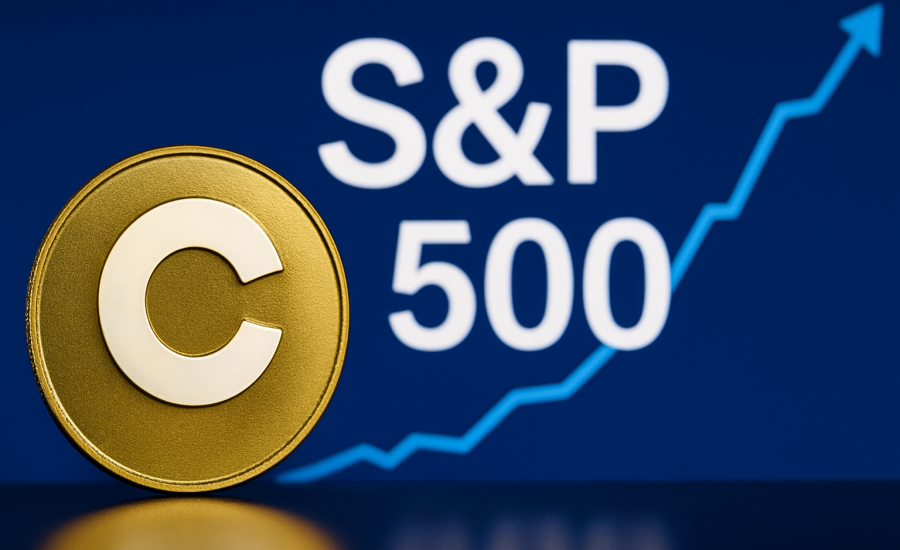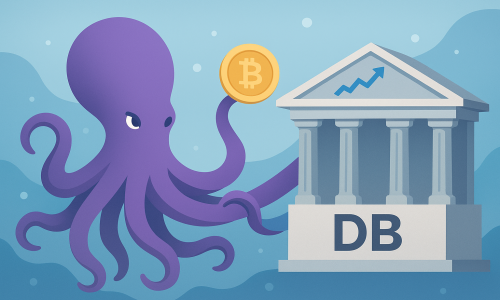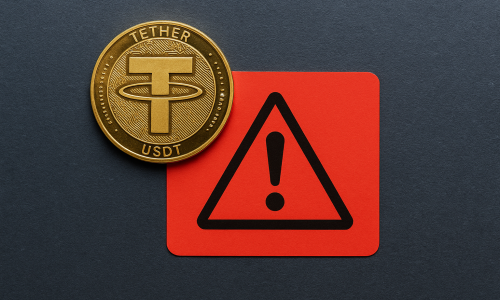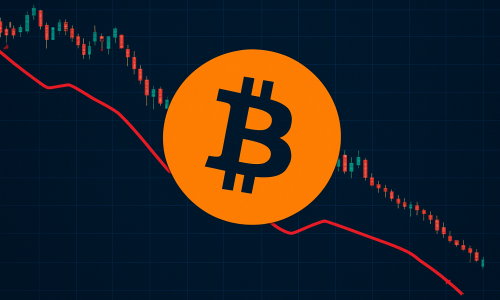Introduction
In a landmark move that underscores the mainstream acceptance of digital assets, Coinbase, one of the world’s largest cryptocurrency exchanges, has been added to the S&P 500 index, replacing Discover Financial. This marks the first time a crypto-native company has entered the prestigious list of 500 leading publicly traded companies in the United States, a moment that carries profound implications for the global crypto industry, institutional investors, and the broader financial ecosystem.
Coinbase And Its Journey To Wall Street Prominence
Founded in 2012 by Brian Armstrong and Fred Ehrsam, Coinbase was born out of a vision to make crypto accessible to everyday users and institutional players alike. With its simple, user-friendly platform, Coinbase became a household name among retail traders during the 2017 crypto boom and again during the 2020–2021 bull run. It was also one of the first cryptocurrency exchanges to go public, listing on the Nasdaq via a direct listing in April 2021.
Its journey has not been without challenges. Regulatory scrutiny, volatile markets, and evolving security demands have tested Coinbase’s operational resilience. Yet, through multiple crypto winters and regulatory shifts, the company has emerged stronger, with growing user bases and increasing institutional partnerships. Its inclusion in the S&P 500 signals that Coinbase is no longer just a tech startup riding the crypto hype—it is now a recognized financial institution shaping the future of the global monetary landscape.
Understanding The Significance Of The S&P 500 Inclusion
The S&P 500 is often seen as a barometer for the U.S. economy and equity markets. Comprising 500 of the most valuable publicly traded companies, inclusion in the index is based on a company’s market capitalization, liquidity, sector classification, and financial viability. By making it into this index, Coinbase has achieved what was once thought improbable for a crypto business: institutional validation.
This achievement holds deep symbolic and practical meaning. Symbolically, it represents the crossing of a threshold—where the crypto economy is no longer separate from traditional finance but is now a part of it. Practically, it means greater visibility for Coinbase among institutional investors. Funds and ETFs that track the S&P 500 will now be required to hold Coinbase stock, adding significant buy-side pressure and potentially stabilizing its long-term valuation.
Immediate Market Reaction: A 24 Percent Surge In COIN Stock
News of Coinbase’s inclusion in the S&P 500 was met with enthusiastic investor response. The company’s stock price surged by over 24 percent following the announcement, reflecting renewed investor confidence and highlighting the excitement surrounding this milestone. Analysts note that such an uptick in value is not just about the S&P listing itself but what it represents—greater access to institutional capital, improved brand trust, and a bridge between crypto innovation and regulated markets.
Moreover, the stock surge also underscores how bullish the broader market is on the future of digital assets. Even as regulatory uncertainty persists in the United States, especially concerning the Securities and Exchange Commission’s treatment of crypto tokens, Coinbase’s rise shows that investors still view the crypto sector as a long-term growth play.
Impact On The Crypto Industry: New Era Of Institutional Legitimacy
Perhaps the most significant consequence of Coinbase’s S&P 500 inclusion is the impact it will have on the broader crypto industry. Crypto businesses have long been seen as volatile, unregulated, and speculative. But when a company born in the decentralized revolution earns its place among the likes of Apple, Microsoft, and JPMorgan Chase, it shifts the perception of the entire industry.
Institutional investors, hedge funds, pension funds, and even sovereign wealth funds that may have once been hesitant to enter the crypto space could now find themselves more comfortable engaging with it—either through COIN shares or directly with digital assets. This is because Coinbase acts as a gateway; it is seen as a safer and more regulated way to gain crypto exposure without diving headfirst into volatile token markets.
Furthermore, Coinbase’s presence in the index may spur increased interest from traditional media, financial analysts, and academic institutions, thereby driving education and thought leadership around digital assets.
Coinbase’s Business Strategy: More Than Just A Trading Platform
Coinbase has spent years diversifying its revenue streams to become more than just a trading platform. It now offers services ranging from staking and yield generation to enterprise-grade custody for institutional clients. It has also developed robust security infrastructure and compliance programs to meet growing regulatory demands.
Through initiatives like Coinbase Prime and its push for decentralized identity solutions, the company is actively expanding into areas like Web3, DeFi, and digital identity management. These innovations, when coupled with its increasing institutional reach, position Coinbase as a central player in shaping the future of digital finance.
Why Discover Financial Was Replaced?
The removal of Discover Financial Services from the index is not necessarily a condemnation of the company but rather an outcome of evolving market dynamics. Discover has faced challenges including regulatory fines, data breaches, and slower growth in a highly competitive financial sector. In contrast, Coinbase’s high market capitalization, trading volume, and growth potential made it a compelling candidate to take its place.
This replacement also reflects broader changes in how financial value is created in the 21st century. Traditional credit card businesses face margin pressure and saturation, while crypto platforms, offering borderless and frictionless alternatives, are gaining traction among the digitally native population.
Regulatory Landscape And Coinbase’s Unique Position
Coinbase’s addition to the S&P 500 also comes at a time when U.S. regulators are scrutinizing crypto markets more closely than ever before. The SEC has launched investigations into several digital asset companies and has even initiated lawsuits against firms for allegedly offering unregistered securities.
In this climate, Coinbase’s emphasis on compliance and regulation has served as both a defensive and strategic advantage. The company has maintained transparency, submitted to audits, and pushed for clearer regulatory frameworks. Its decision to cooperate with lawmakers and work within the system may have played a crucial role in convincing index committees and investors that it belongs in the S&P 500.
Coinbase is also actively involved in political advocacy, supporting pro-crypto legislation and promoting digital financial literacy. Its leadership, especially CEO Brian Armstrong, has taken a vocal stance in shaping crypto policy in Washington, further establishing its credibility in the regulatory arena.
Institutional Adoption: A Catalyst For Broader Crypto Growth
With Coinbase now firmly embedded in the traditional financial structure, more institutions may follow. Already, banks like JPMorgan and Goldman Sachs have started offering Bitcoin-related services, and asset managers like BlackRock have applied for spot Bitcoin ETFs. Coinbase’s success could further accelerate this momentum, opening doors for more partnerships, product launches, and market expansion.
Institutional involvement often brings greater accountability, better governance, and larger capital inflows. These factors, in turn, could stabilize the notoriously volatile crypto market, increase liquidity, and drive long-term adoption.
Global Implications And Coinbase’s Expanding Footprint
Coinbase has also expanded its services globally, entering markets in Europe, Asia, and Latin America. Its international ambitions are aligned with broader trends, where crypto adoption in emerging markets is surging. Whether through retail trading, business payments, or remittance services, Coinbase’s global presence allows it to tap into regions where traditional banking is either inaccessible or inefficient.
The inclusion in the S&P 500 will likely bolster Coinbase’s brand recognition globally, helping it secure licensing agreements, build local partnerships, and navigate jurisdictional regulations with more authority.
Conclusion
Coinbase’s entry into the S&P 500 is more than just a feather in its cap—it is a validation of the cryptocurrency industry’s place in the modern financial world. It highlights the convergence of traditional finance and digital innovation and provides a roadmap for other crypto companies aspiring to reach similar milestones.
This move comes at a pivotal time when blockchain technologies, decentralized finance, and digital assets are increasingly influencing how we think about money, value, and trust. With Coinbase at the forefront, the line between Wall Street and the blockchain continues to blur, creating a more inclusive and technologically advanced financial future.



